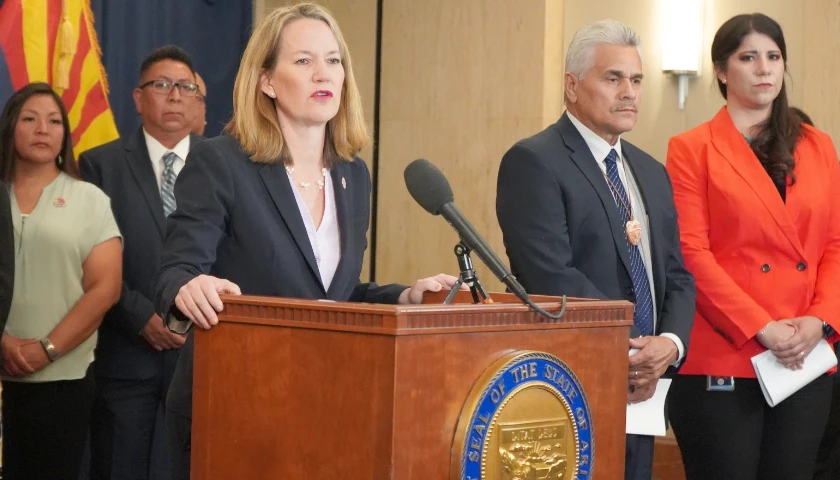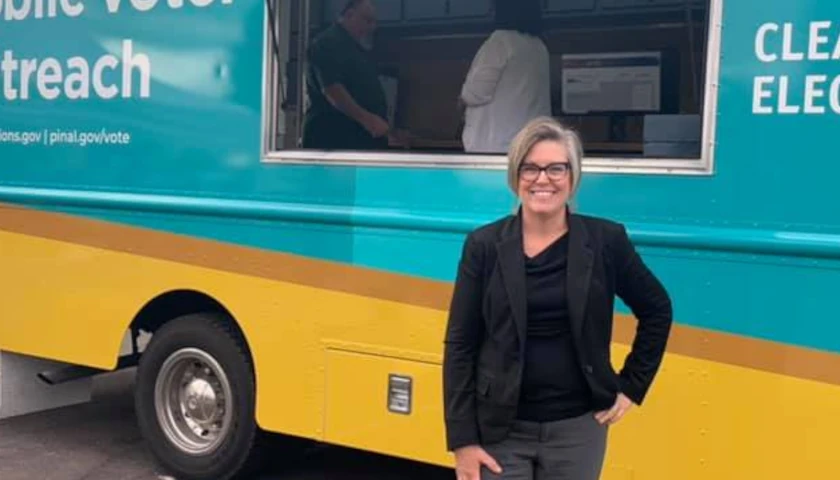by Cameron Arcand
Seventy-five million dollars from the federal opioid settlement is expected to head toward the state’s Department of Corrections, Rehabilitation, and Reentry in the latest budget proposal, but Attorney General Kris Mayes and some lawmakers are unhappy about it.
Mayes might sue over the proposed use of the money, saying it would act as a “sweep” to help with the budget deficit in an illegal fashion, according to Capitol Media Services. The budget is far from finalized as of Friday morning, but lawmakers could pass a budget on Friday night or Saturday morning. The proposed budget is the result of months of negotiations between Gov. Katie Hobbs’ office and Republican legislative leadership.
The memorandum of understanding on the opioid settlement states that Arizona plans to “prioritize” roughly 30% of the state’s funds for a list of purposes including “Department of Corrections and related prison and jail opioid uses.”
“That MOU notwithstanding, the amount of money that is apparently being swept this year, and over the next few years ($195 million) to send just to DOC exceeds 30% of the state share just to send to DOC. Additionally, a JLBC analyst said yesterday in caucus hearings that $75 million is going to be used to backfill the DOC budget hole in the current fiscal year,” Mayes’ office stated.
“The Attorney General does not dispute there is a need for opioid funding in prisons and had proposed around $10 million for those uses in the budget. But it’s the amount being proposed and the admission that these funds are being used to backfill budget deficits that is at issue here,” her office added.
Page 21 of the general appropriations budget proposal itself states that it will “offset past and current department costs” for substance abuse-related “care, treatment, programs, and other expenditures.” When looking at the memorandum, it also states that the funds can be used for “support and reimburse” some types of treatment services. According to proponents of the funding, House Bill 2897 says the specific funds are “non-lapsing,” meaning it can be used in years afterward, which could technically fall under the 30% share of the overall funds given to the state.
Some lawmakers expressed concerns about the legality of the use of the funds.
“This backwards approach says ‘We’ll get you treatment but only if we lock you up first.’ And that’s assuming DOC will even use the money the way they claim they will. Historically they’ve massively failed people living with substance use disorder in their walls,” Rep. Analise Ortiz, D-Phoenix, tweeted on Thursday, saying it could “jeopardize millions in future funding.”
House Speaker Ben Toma responded to the criticism from Mayes in a statement to The Center Square.
“The AG has an unfortunate habit of threatening legal action against other elected officials without doing her homework,” Toma said. “She threatened to sue the Legislature last year over the budget and opioid funding, but that lawsuit never materialized. I encourage the AG to try engaging in a productive dialogue with the Legislature and the Governor to communicate her policy disagreements.”
An Auditor General report from 2021 found that most people needing drug treatment in Arizona’s prison system couldn’t receive it.
“Approximately 4,300 (17 percent) of 24,900 inmates who needed SA treatment were enrolled in either the moderate or intensive SA treatment program, and 2,700 enrolled inmates (63 percent) completed an SA treatment program,” the report stated. “Approximately 2,900 (79 percent) of 3,700 inmates who needed DUI treatment were enrolled in the program, and 2,500 enrolled inmates (87 percent) completed it.”
– – –
Cameron Arcand is a staff reporter for The Center Square covering Arizona. A contributor since 2022, Arcand previously worked for Salem Media Group and The Western Journal.
Photo “Kris Mayes” by Kris Mayes.





